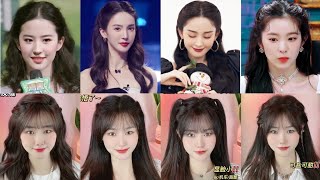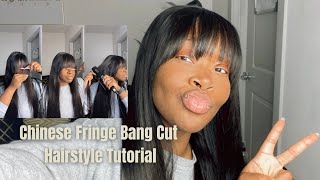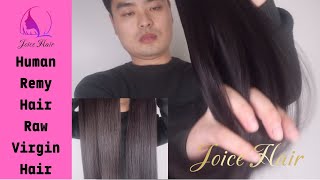Medieval Northeast Asian Hairstyles, 1000-1400
Here we look at hairstyles in northeastern Asia (China and Mongolia) from 1000-1400. Chinese, Khitan, Jurchen, Tangut and of course, Mongolian.
Medievalists.net: https://www.medievalists.net/
DONATIONS:
Patreon: https://www.patreon.com/jackmeister
Paypal: https://www.paypal.com/paypalme/thejac...
Facebook: https://www.facebook.com/TheJackmeiste...
Instagram: https://www.instagram.com/the_jackmeis...
PRIMARY SOURCES
The Secret History of the Mongols: A Mongolian Epic Chronicle of the Thirteenth Century. 2 Volumes. Translated by Igor de Rachewiltz, Boston: Brill, 2004
Peng Daya and Xu Ting. “A Sketch of the Black Tatars.” In The Rise of the Mongols: Five Chinese Sources. Edited and Translated by Christopher P. Atwood, 93-131. Indianapolis Hackett Publishing, 2021.
Rashiduddin Fazlullah. Jami’ u’t-tawarikh: Compendium of Chronicles: A History of the Mongols. Translated by W. M. Thackston. Cambridge, MA: Harvard University, 1998.
Zhao Gong. “A Memorandum on the Mong-Tatars.” In The Rise of the Mongols: Five Chinese Sources. Edited and Translated by Christopher P. Atwood, 71-92. Indianapolis Hackett Publishing, 2021.
SECONDARY LITERATURE
Atwood, Christopher P. “Validation by Holiness or Sovereignty: Religious Toleration as Political Theology in the Mongol World Empire of the Thirteenth Century.” The International History review XXVI no. 2 (2004): 237-256.
Bol, Peter K. “Seeking Common Ground: Han Literati under Jurchen Rule.” Harvard Journal of Asiatic Studies 47 o. 2 (1987): 461-538.
Godley, Michael R. “The End of the Queue: Hair as Symbol in Chinese History.” East Asian History 8 (1994): 53-72.
Guojan Wang. “Absent Presence: Costuming and Identity in the Qing Drama A Ten-Thousand Li Reunion.” Harvard Journal of Asiatic Studies, 79 no. 1 &2 (2019): 97-130.
Jing-shen Tao. “The Influence of Jurchen Rule on Chinese Political Institutions.” The Journal of Asia Studies 30 no. 1 (1970): 121-130.
Johnson, Linda Cooke. “The Wedding Ceremony for an Imperial liao princess. Wall Paintings from a Liao Dynasty Tomb in Jilin,” Artibus Asiae 44 no. ⅔ (1983): 107-136.
Ledyard, Gari. “Two Mongol Documents from the Koryo Sa,” Journal of the American Oriental Society 83 no. 2 (1963): 228.
Liu, James T.C. China Turning Inward: Intellectual-Political Changes in the Early Twelfth Century. Cambridge, MA: Harvard University Press, 1988.
Meng Li and Bin Wang. “Difference, Boycotting, Infiltration--- the Analysis of Attribute of the National Costumes in Nansong and Beisong Dynasty.” Asian Social Science 5 no. 4 (2009): 32-39
Park, Chun-Sun and Kim, Il-Jung. “중국고대 북방민족의 발식(髮飾)에 관한 연구- 요(遼).금(金).원(元)을 중심으로 - [A Study on Hairstyle in Northern Nation of Ancient China.]” 한국생활과학회지 [Korean Journal of Human Ecology] 15 no. 4 (2006): 573-583.
Robinson, David. Empire’s Twilight: Northeast Asia Under the Mongols. Cambridge, MA: Harvard University Press 2009.
Roslyn Lee Hammers.“‘Khubilai Khan Hunting’: Tribute to the Great Khan.” Artibus Asiae 75 no. 1 (2015): 5-44.
Shea, Eiren L. Mongol Court Dress, Identity Formation, and Global Exchange. New York: Routledge, 2020.
Stewart, Angus. “If the Cap Fits: Going Mongol in Thirteenth-Century Syria.” Journal of the Royal Asiatic Society Series 3, 26 no. 1-2 (2016): 137-146.
IMAGE CREDITS
Image from Great Mongol (Demotte) Shahnama: http://www.warfare.tk/Persia/14/Great_...
“Moon-Water Bodhisattva Kuanyin.” Plate 6, Shea, Eiren L. Mongol Court Dress, Identity Formation, and Global Exchange. New York: Routledge, 2020
Figure 5. “Tile carving from Dong Hai Tomb,Houma,Shanxi.” [Jurchen Horseman?], pg. 39, Meng Li and Bin Wang. “Difference, Boycotting, Infiltration--- the Analysis of Attribute of the National Costumes in Nansong and Beisong Dynasty.” Asian Social Science 5 no. 4 (2009): 32-39
Figure 6. “Part of the Study Sketch of mural painting from Xiao Yi Tomb,Yemaotai,Liaoning.” [Khitan horsemen] pg. 39, Meng Li and Bin Wang. “Difference, Boycotting, Infiltration--- the Analysis of Attribute of the National Costumes in Nansong and Beisong Dynasty.” Asian Social Science 5 no. 4 (2009): 32-39
Portrait of Khubilai Khan, Wikipedia https://en.wikipedia.org/wiki/Kublai_K...
Portrait of Chinggis Khan, Wikipedia https://en.wikipedia.org/wiki/Genghis_...
Group of Terracotta Soldiers, Wikipedia https://commons.wikimedia.org/w/index....
China imperialism cartoon, Wikipedia https://en.wikipedia.org/wiki/Qing_dyn...
Takezaki Suenaga’s Scrolls of the Mongol invasion. http://digital.princeton.edu/mongol-in...
Archer from Khubilai Khan Hunting. https://i.pinimg.com/originals/95/9e/a...
music is provided by Epidemic Sound. http://www.epidemicsound.com
Across history, a person's hairstyle is one of the primary means to present their political allegiance and role in society. Today, we'll be looking at some of the most significant male hairstyles for peoples in today's mongolia, northern china, from about 1 000 through to the 15th century, chinese kitans, churchian, tanguts, mongols and all the sexiest haircuts of the mongol conquests. A version of this script was uploaded as an article. I wrote for medievalists.net, where i in a great deal many other historians contribute monthly articles free to read on a variety of topics. So if you hate listening to me, but like the information, the link is in the description. We are fortunate for this period in that we have a large number of written descriptions of these hairs, as well as visual imagery. There are surviving paintings, sculptures and murals from tombs, which show many of these hairstyles and in the case of the mongols, there are sources in imagery describing their appearance in hair, from china to iran and europe. Learning these hairstyles helps identify the figures shown in these aforementioned artworks, but it also shows the ways in which these states legitimize themselves to put simply having the persuasive power to force a subject. Population to wear their hair and dress in state mandated styles is no small feat. Hair was, in effect a visible marker of a given dynasty as much as coinage or public monuments. This period saw today's china and mongolia go through a distinct power struggle in the decades. After the fall of china's great tang dynasty in 907, much of north china remained until the 1370s under the rule of the so-called conquest dynasties. These were states founded by non-chinese peoples who adopted the trappings of chinese dynasties. These were the lao dynasty established by the kitans, a semi-nomadic people speaking a language somehow related to mongolian. They were succeeded by the jin dynasty, ruled by the jurgen ancestors of the manchu and hailing from manchuria and finally, the mongols who, under humalai a grandson of chingashan, established the uyun dynasty. At the same time, today's northwestern china in the gansu corridor was controlled by the shisha dynasty, ruled by the tangut, a people's tibetan heritage. In a diverse kingdom of turkic, nomads han chinese and yugos only to the south was there a chinese dynasty ruled by chinese. The song dynasty, the long co-existence of such powerful states, resulted in numerous surviving textual and archaeological depictions of these people and their hair, as well as accounts of interactions and conflict between the different ruling ethnicities in their subject populations. The conquests of the kitans, churchians and mongols did not replace the existing chinese population or even the proceeding. Conquering population heir became one means by which each of these states and people sought to protect, enforce or assert their identities. In such a milieu we'll be focusing on male hairstyles, which were the most dramatic and policed over this period. We'Ll first note: the han chinese, the sedentary agricultural population, which made up the majority of the lao jin and yun empire's populations, bureaucracies and, in the case of the song, the ruling class for millennia. The quintessential chinese hair was the top, not the terracotta. Soldiers of the tomb of china's first emperor all bear this hair in confusion and taoist belief. It was of utmost importance to retain every part of the body, including the hair. The body was a gift from the parents, cutting the hair was damaging their gift and therefore an act of grave disrespect, as filial piety was a key component of confucian thought. This was no small matter. Shaving top knots, for instance, became a punishment reserved for criminals, so once reaching adulthood, the hair was not cut at all, but instead tied tightly into a bun, the size style and exact placement of the knot varied over the dynasties but remained a consistent feature of chinese Society until the manchu conquests in the 17th century from the lowliest members of society to the emperor himself, men wore their hair in top knots, the popular style in modern chinese and korean dramas were the hairs worn in a bun but flowing loosely below. It is a modern invention, the most obvious exceptions were buddhist monks who shaved their heads entirely, but the general association in medieval chinese literature was that a person properly incorporated into chinese culture what scholarship calls synthesized wore their hair in top knots, any other style was associated With one thing, barbarians, who were generally stereotyped as wearing braids, loose flowing hair and partially shaven heads the first such barbarians, we will look at are the ketones founders of the lao dynasty, just as the top knot marked the person as a part of chinese culture across Most of asia hairstyles also acted as cultural and political markers peoples of a given ethnic group or subject to them had to shave or grow their hair in a certain way, almost as a sort of medieval uniform wearing your hair in the style. The ketone, for instance, could make you or kitan or is bearing allegiance to them. Such partially shaven hairstyles were common across the eurasian step, going as far back to tionu, though, information on the hair of nomadic and semi-nomadic peoples before the ketones tends to be spotty or known only from vague textual descriptions for the ketones, though, we have a considerable body Of information on their hair and appearance in both written sources and visual, the two centuries of kitan rule in north china left not only many lao and seong dynasty artworks depicting them, but also numerous ketone, tombs with paintings of kitan life and culture. The ketone shaved, the top of the head, except for a strip along the temples and above the ears. Sometimes it continued along the forehead or back of the head at the temples. It was left to grow long and loose most depictions. Have it fall in front of the ears or more rarely push behind them? This was called kunfa in the chinese sources. The kitan hair bears great similarity to that of their imperial successors. The chin founders of the jin dynasty, though, unlike the loose ketone hair, the georgian wore their hair braided. There are considerably fewer visual depictions of church and hair as few surviving artworks are reliably dated and located to the jin dynasty and many song era. Depictions have the heads of the churchin covered by hats or helmets, regardless aided by written descriptions. It seems that the church and style is to shave the front and top of the head growing the hair and two or more pigtails behind the ears or on the back of the head called bianfa. These could be braided tied together with silk threads and form a long set of tails. A tile carving from a gin error tomb in shanxi sees the likely church and horseman's breeds falling all the way to his belt. It seems that over time, these braids were increasingly tied together into one long cord by the 17th century. This developed into the well-known queue of the church's descendants, the manchu called beyonce, both kitan and churchian rulers, gave orders to varying levels of effectiveness, mandating the chinese population adopt their hairstyles during the reign of the third gen emperor, chi chong of chin, the chinese and lands. Recently, taken from the sun dynasty were ordered not to wear han hair or clothing on pain of death. While it is impossible to know how thoroughly such orders were carried out, we know that song embassies to the jin capital in the late 12th and early 13th century lamented out of northern chinese, now dress and wore their hair in the manner of the northern barbarians or Continued to play music in church and style at ballets some 400 years later, the church's descendants, the manchu of the qing dynasty, were very successful in forcing their hair upon the chinese population by the start of the 20th century, the queue had become for the rest of The world, the stereotypical, chinese haircut and part of the image of revolution against the ching was the cutting of these cues. Despite owing official homage to the jin dynasty, the tangoth of the xi shia dynasty do not appear to have been required to wear their hair and church and braids. Instead, they maintain their own unique, partially shaven style, first mandated by the founding tangod emperor in the 1030s wai mingyu and hao. Those who wish to be considered tangot had to adopt the hairstyle known in the chinese sources as the tufa on pain of death. Here, the top of the head was shaved in a sort of tonser in front of the ears. The hair was grown, long and loose framing the face. Personally, i find it the least attractive of all these hairs. The haircut of the mongols is perhaps the best known and distinctive of this epoch described in sources from china, the middle east and europe. It is depicted in two murals and artworks from china, iran, japan and beyond, and the famous uh error portraits of chingos and huplai. It can be seen peeking out from under their hats. It was made up of two distinct parts: a central lock in the middle of the forehead, with the rest of the head shaved, except for two twisted horns or braided loops, which fell behind the ears down to the shoulders altogether. They were called nuchala and were most usually known in chinese as pogiao like the churchian early in their conquests. The mongols sought to violently enforce their cofer on the conquered peoples. Ogidai han's circa 1231 letter demanding the submission of korea opens with such a threat. The early conquests in north china saw the mongols try to force their hairstyle upon that population. At the large, a 12 14 meeting between chingashan and the buddhist monk hyun saw chingus demand that the bald-headed monk grow his hair out in mongolian style, as doing so was against his religion. The monk managed to persuade the khan to let him retain his shaved head. Only gradually did the mongols ease their demand for religious clergy to grow or shave. Their hair by the 1230s song embassies noted that former members of the jinn court who joined dao's temples were able to maintain their dirt and haircut. It seems more usual for people joining the mongol army, especially turk, nomads to be forced to take the mongol hairstyle during his siege of summer, con in 1220 chingashan demanded the turks who surrendered from the garrison to have their heads shaved in the mongol nuclear turkic. Hairstyles of the period by the way tended to be long and worn loose or in braids going down the back. There is only indirect evidence for more forced haircuts past the 1230s, especially in south china, but even the song dynasty cannot escape the nuhullah. The song, the official dynastic history of the song dynasty, seems to indicate that young boys and men in the song dynasty, or at least before war broke out with the mongols in the mid 1230s, were cutting their hair to emulate the mongolian fashion. During the height of the lao in jin dynasties, the song government issued laws forbidding the wearing of barbarian, hairstyles and clothing. Some of this legislation had to be passed repeatedly, indicating some trouble implementing it. Likewise, from the 1330s, the mongolian government began issuing decrees forbidding the chinese from adopting mongol customs, clothing, hair and language in what became a failed effort to enforce the ions racial hierarchy. Hair served as a means to demonstrate allegiance to the new dynasty and remain difficult to shake off berke hahn of the golden horde. The famous early convert to islam was described by mamluk embassies as continuing to wear his hair in traditional mongol fashion. This trend continued in the golden horde, at least until the reigns of uzbe and johnny beihan after korea was finally subjugated late in the 13th century. The korean kings, intermarried with the family of hubli han and eagerly adopted mongolian, affects mongolian language, clothing and hairstyles remained a part of korean courtly life until after the yuan, dynasty was forced from china. In 1368., the ming dynasty the succeeding dynasty, which ousted the mongols, past laws forbidding han chinese from wearing mongol clothes or hair, though they did allow those chinese with mongolian names to keep the hair. But despite all this, just like today, hair remained an object of personal expression or at times a tool. A 1221 song dynasty embassy reported that bal, a son of muhali and one of the top mongol generals in north china did not shave his hair in the mongol style and preferred to wear turbans and tight-fitting clothing. We have numerous reports of soldiers from across asia. Tying their hair into loops to imitate the mongols. Mamluks and armenians are recorded in numerous accounts dressing as mongols, particularly mongol style hats to disguise themselves, while raiding in order to terrify the population. Even the mongols could get in on this in 1261, mongol troops, donned syrian clothing and let down their hair in order to appear like kurds when attacking muzzle. Remember if you liked this, you can actually just read it on my evilists.net. If you got this far, though it's kind of silly to read the article in the end, but do it anyways give them the clicks?





Comments
The Jackmeister: Mongol History: All sources and image credits are listed in the description. You can read the article on Medievalists.net here: https://www.medievalists.net/2022/05/medieval-hairstyles-from-bianfa-to-top-knots-in-northeast-asia/
AGS 363: Since it is specific about "male" hairstyles, I have to ask this question: Do we know how the laws and customs handled cases of natural baldness? Most of them seem to accommodate the normal pattern of hair loss (by shaving the critical regions), but especially the mongol "frontal lock of hair" could pose problems. Or did the tradition of drinking yourself to death before reaching 35 prevent this problem?
KlutZ: thank you so much for covering this topic sir, you earned my respect , this is the best channel about mongols at the moment. Liked and subbed
Ton Lito: This makes me think of the Early Medieval Pechenegs, who were noted for wearing their hair very long and flowing, which would probably be very attractive if they also weren't noted as being generally uncleanly. This changed to the more common Turkic hairstyle under Oghuz influence so that, in one battle the Byzantines had trouble distinguishing their Pecheneg and Tork allies from their Seljuk enemies.
Lucky Luke: Are you kidding? The best part of this channel is listening to Jack Meister.
蜀河娃: Interesting, would like to see your analysis of clothing for different groups of people next time.
Artur M.: Note to myself: hairstyles are a serious business. The various partially shaven hairstyles of the nomads of the Euroasian steppes make me think about the Ukrainian 'oseledets'.
Brian M: The "Pigtail General" Zhang Xun in 1917 attempted to restore the Qing dynasty. It was the last stand of the queue hairstyle. In 1922, the deposed Emperor Puyi cut his off, heralding the end of this longstanding hairstyle.
toucan masterx: Make more about the khitans and your works are good
vahed tosy: 2:08 artísticas son unos KISSSSSS.Uno mamuchas y uno buen ejercicio.2:08 5:25 Se deja ver quel hay muy buenos resultados ❤
Nenenin Donu: 11:00 Khwarezmian Turks apart from the nobilities prolly had extremely diverse hairstyles ranging from braided to shaved since many Turkic people had already abandoned their traditional haircuts after converting to Islam 2-3 centuries prior to the Mongol invasion of Central Asia
Turmunkh Ganbaatar: I might be misremembering but in my textbook "Mongolian culture and civilization" at the National University of Mongolia it said that prior to Chingisid khaan using Uigher as standardised script, there were a hodge podge of scripts used in tandem like the Khitan large script which quickly out of favour for the most part, remnants of sogdian from the gokturks, and of course Uigher. I don't suppose we know of any examples? Would khitan been used to interact would other people who were part of the liao and sogdian Central Asia.
Lobster Eleven: thank you for the vid!
HotZetiGer: "...grow your hair!" -Genghis khan
Jarl Sigfried: There is a sharp break between the Ottomans and the Seljuks in hair matter. Despite Ottomans were Oghuz too and somewhat inheritor of Seljuks,they shaved their head fully. I think reason of that break was Ottomans imitadet late Bahri Mamluks which shave their long fancy hairs after pilgrimage of Sultan al Nasr Muhammed
The Jackmeister: Mongol History: I simply do not have the head shape to pull off any of these hairs.
Henkster's Macro-World:
stevapalooza1: I've read that there might've been a religious component to the partially-shaved hairstyle too. Something about the top of the head being sacred or being a connection to heaven. Mongols always removed their caps while praying, maybe to "connect" with heaven? Or just as a sign of submission. And then there was that episode in the SH where Temujin shaved his head bald for an extended prayer session. makes you wonder what that signified. Unfortunately no one of that era did any in-dept writing about Mongol religious beliefs, so I guess we'll never have a detailed explanation, just speculation.
sam will: Of course it was probably a lot messier than we see in portraits and paintings. Life was rough before the invention of conditioner
Jennifer Breaux: Love ur channel. How ridiculous do they look. Im sure future people will say the same.
Abdul kader khan. Kt Jithu: I see some korean serieses in that series i see some barbaric tribal group called jerchens please explain who are they? they are origin is from modern korean countries? Please?
forgetfulfunctor1: Spent the whole time waiting for *This video was brought to you by Keeps*
Wahnfried von Mannteufel: So they had religious freedom in the Mongol Empire but not freedom of hairdos!?! =D
Abdul kader khan. Kt Jithu: Lot of series about Vikings have realesed but why there no series about chenkis khan?